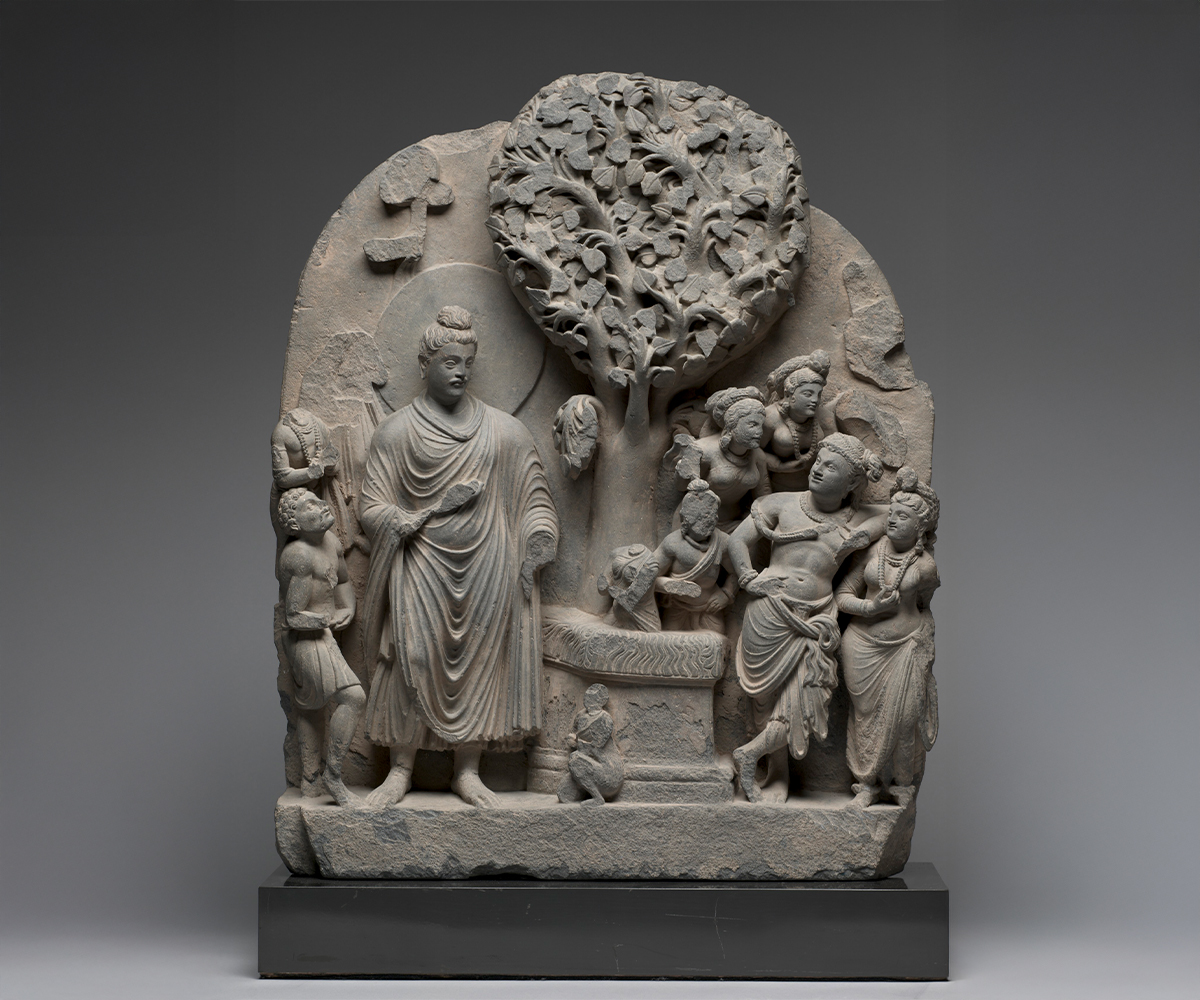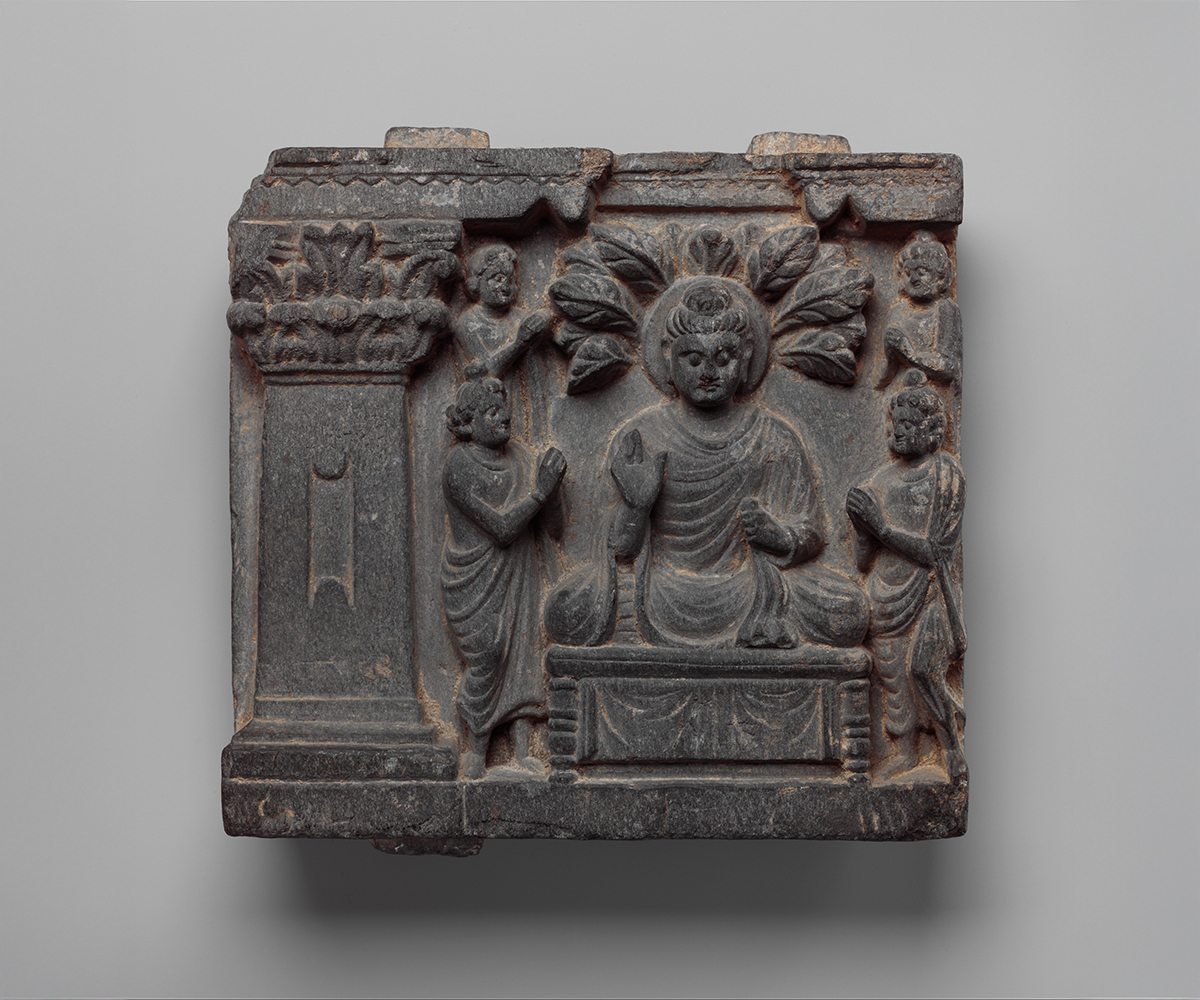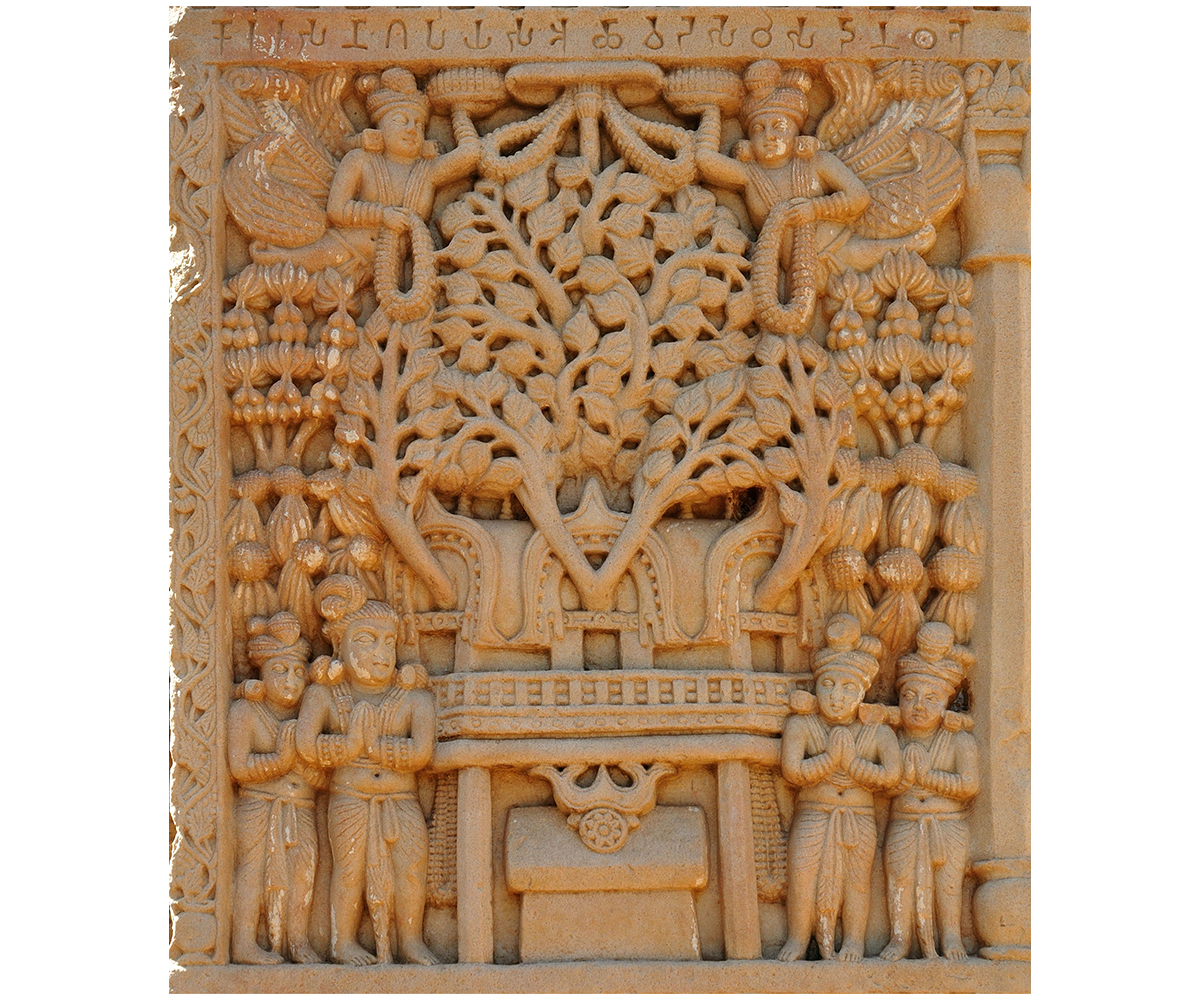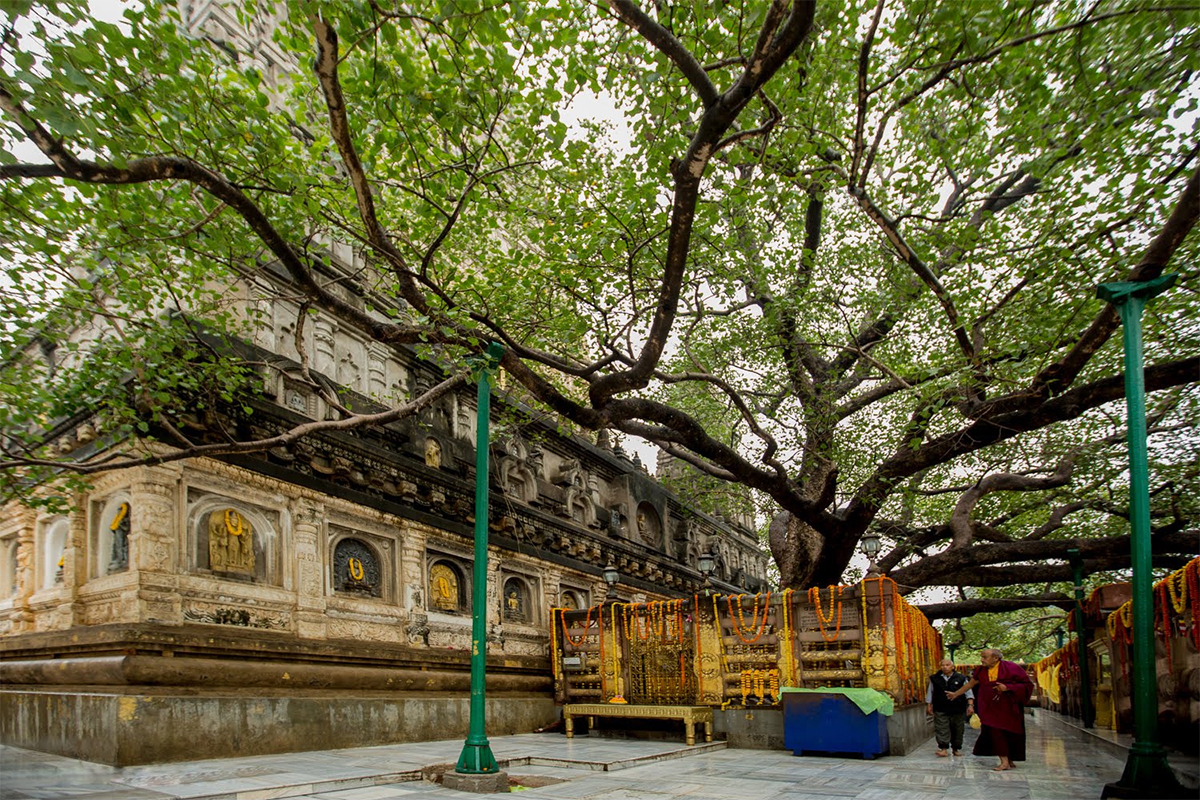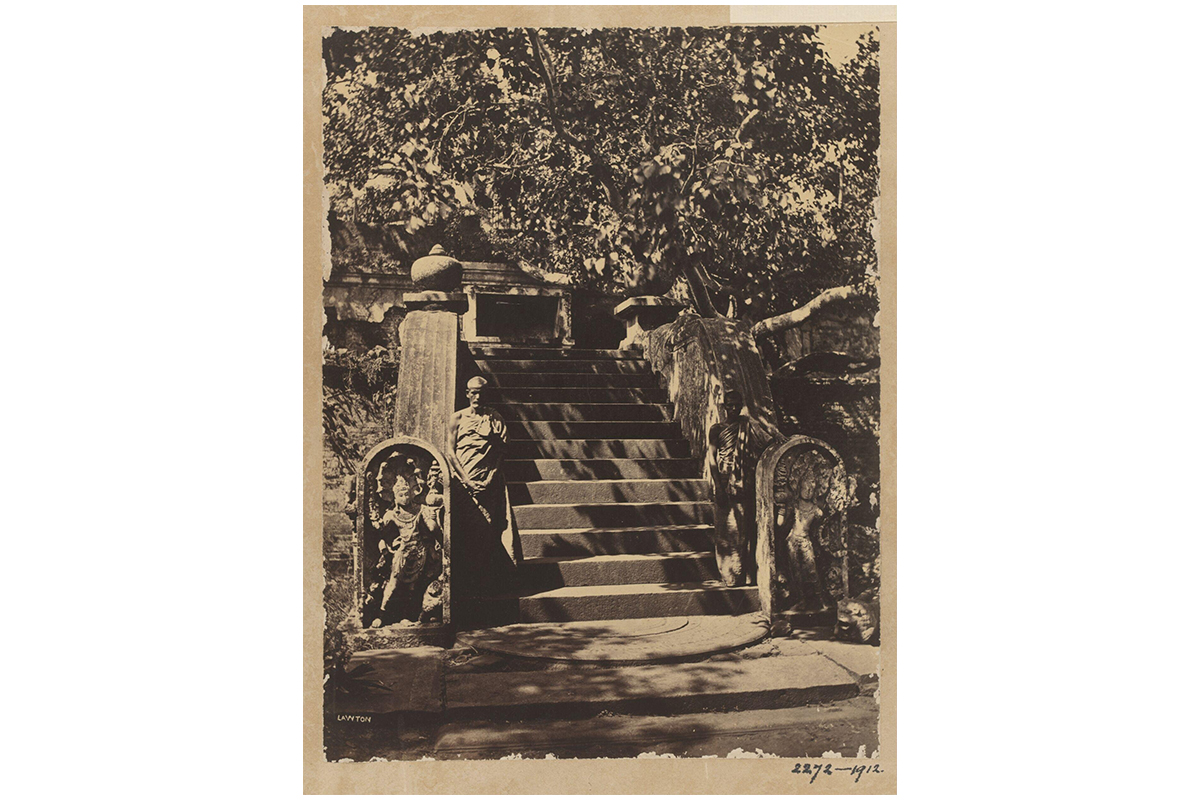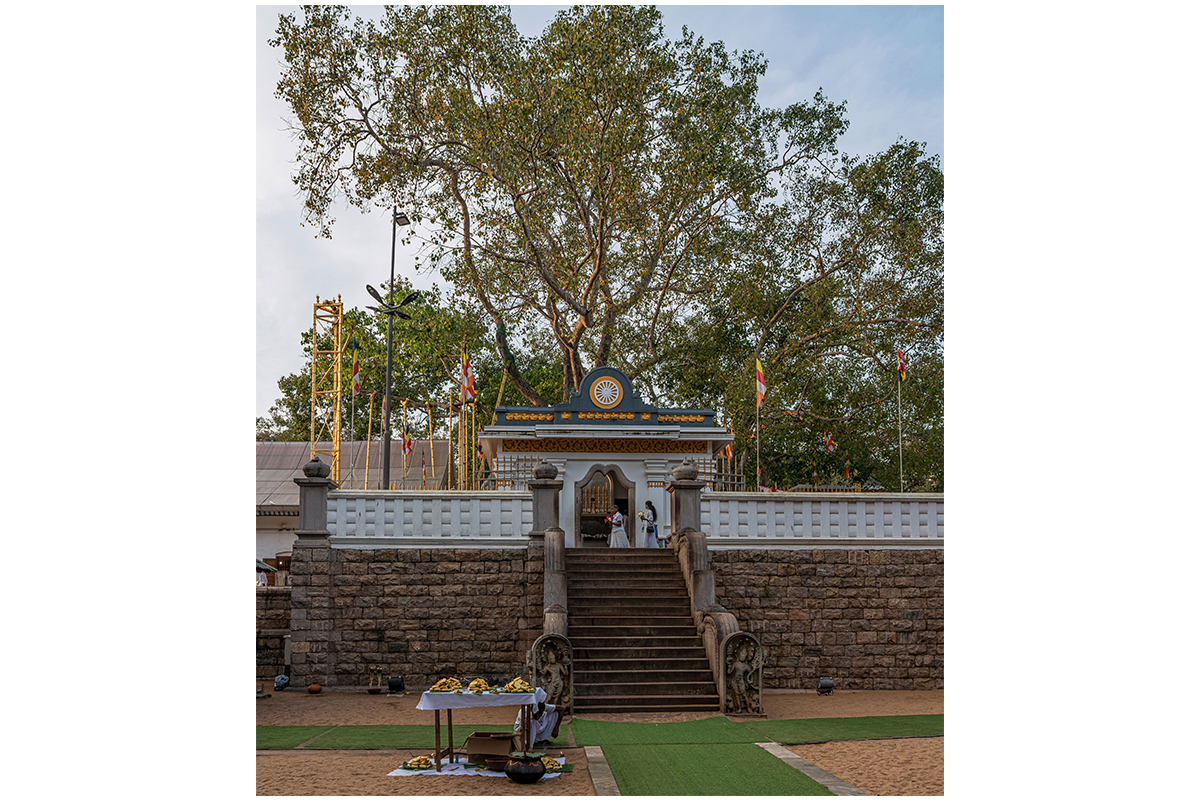ARTICLE
Bodhi Tree
During the aniconic phase of Buddhist art, until the first century CE, the Buddha and critical episodes of his life were represented indirectly through symbols such as the Buddhapada or a pair of footprints, the vajrasana throne, the dharmachakra or wheel of law, and the Bodhi tree, among others. In Bharhut, these are present in the numerous reliefs on the railings (vedika), pillars and gateways (toranas) of Bharhut, of which two reliefs in particular illustrate the existence of the Bodhi tree and its original dedicatory temple. In the first relief, the tree is shown rising up above the vajrasana in a pillared pavilion and flanked by the triratna symbol and vihara like structures between which is an inscription that reads: Bhagavatho Sakamunino Bodho, meaning “the illumination of the blessed Shakyamuni.” The second relief of the tree rising above the roof of a temple is considered a representation of the rear of the temple. These and scenes of devotion at the tree are recurring motifs that are consistent with those traced from the railings of the Amaravati stupa (dated to the third century BCE), as well as those on the southern and eastern gateways (of the first century BCE) and the third-century BCE pillars of the Great Stupa at Sanchi. Later, with the advent of iconic representation during the Kushana rule from the first century CE, the tree was depicted with the Buddha in meditation beneath it, such as seen in Gandharan relief sculptures and in the later sculptures of the Pala period between 800 CE and 1200 CE.
Myth has it that emperor Ashoka when still a non-believer had the Bodhi tree cut and burned down when he first came upon it. However, as he witnessed another tree grow back from the ashes, he was overcome with awe and shame and turned instantly into a believer. Later, unbeknownst to him, his wife cut down the tree again, as she believed he had failed in his task. Learning of this, Ashoka built a wall around the new tree. It is believed that it was subsequently hacked down by King Pushyamitra in the second century BCE, during his persecution of Buddhism, but again survived. It was again destroyed by King Sassanka in the seventh century CE, but later restored by the Magadha king Purna Varma, who surrounded it with a seven-metre high stone wall to prevent it being cut down again.
The tree at the Mahabodhi temple is thought to be a direct descendant of the original Bodhi tree and its sapling, planted at Jetavana monastery by the Buddha’s chief disciple Anathapindika, is considered the second-holiest tree. Among the other descendants of the tree, the Bodhi tree at Anuradhapura, an Iron Age city in Sri Lanka, is believed to have grown from a cutting taken to the city by Ashoka’s daughter in the third century BCE.
Bibliography
Our website is currently undergoing maintenance and re-design, due to which we have had to take down some of our bibliographies. While these will be re-published shortly, you can request references for specific articles by writing to hellomapacademy@map-india.org.





